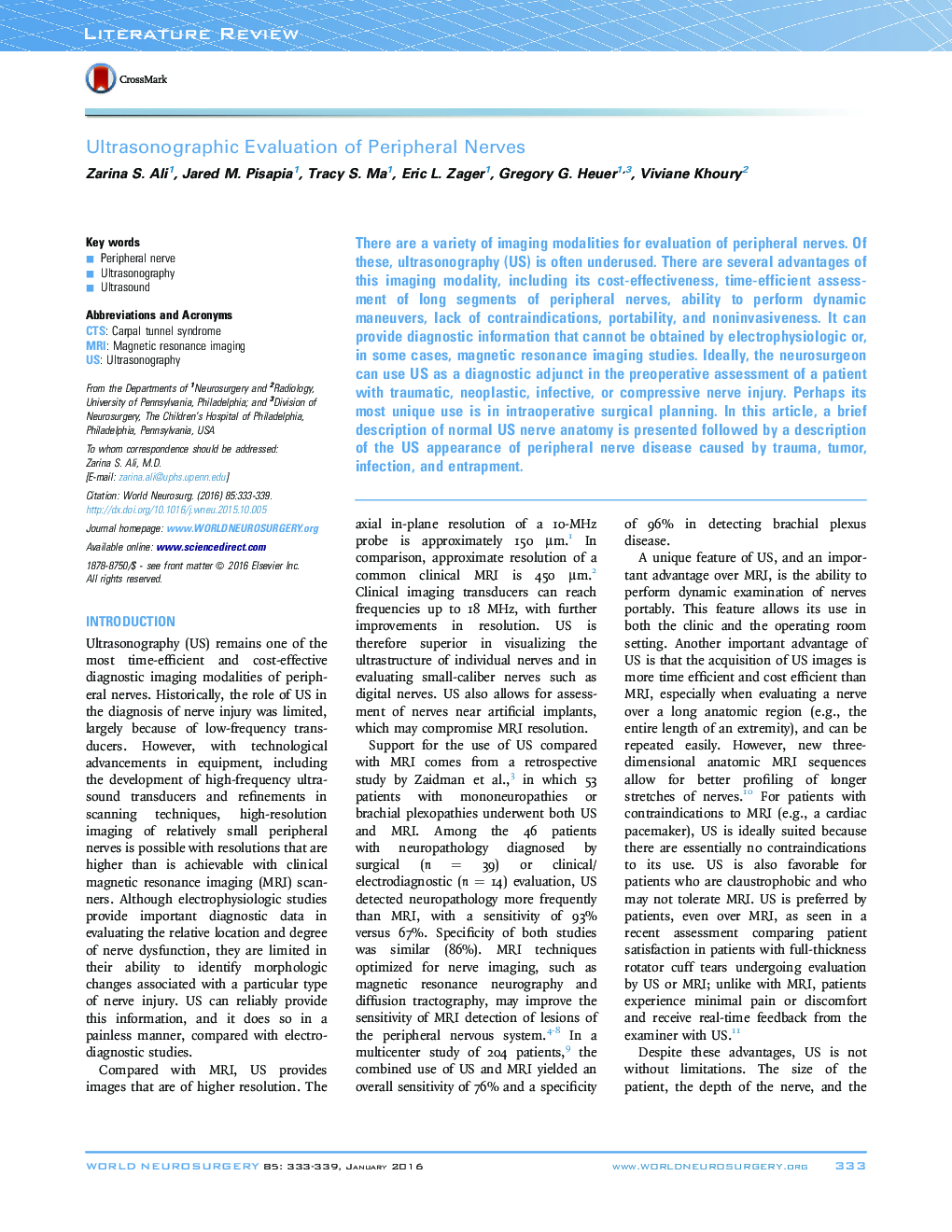| کد مقاله | کد نشریه | سال انتشار | مقاله انگلیسی | نسخه تمام متن |
|---|---|---|---|---|
| 3094911 | 1581470 | 2016 | 7 صفحه PDF | دانلود رایگان |
There are a variety of imaging modalities for evaluation of peripheral nerves. Of these, ultrasonography (US) is often underused. There are several advantages of this imaging modality, including its cost-effectiveness, time-efficient assessment of long segments of peripheral nerves, ability to perform dynamic maneuvers, lack of contraindications, portability, and noninvasiveness. It can provide diagnostic information that cannot be obtained by electrophysiologic or, in some cases, magnetic resonance imaging studies. Ideally, the neurosurgeon can use US as a diagnostic adjunct in the preoperative assessment of a patient with traumatic, neoplastic, infective, or compressive nerve injury. Perhaps its most unique use is in intraoperative surgical planning. In this article, a brief description of normal US nerve anatomy is presented followed by a description of the US appearance of peripheral nerve disease caused by trauma, tumor, infection, and entrapment.
Journal: World Neurosurgery - Volume 85, January 2016, Pages 333–339
